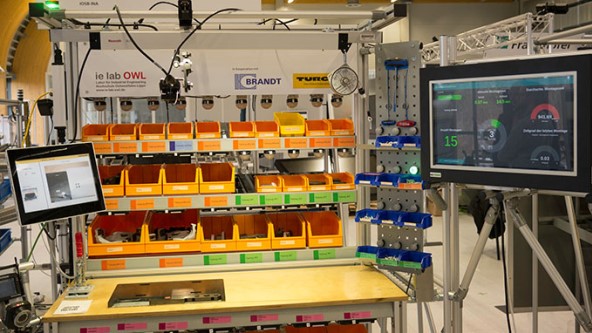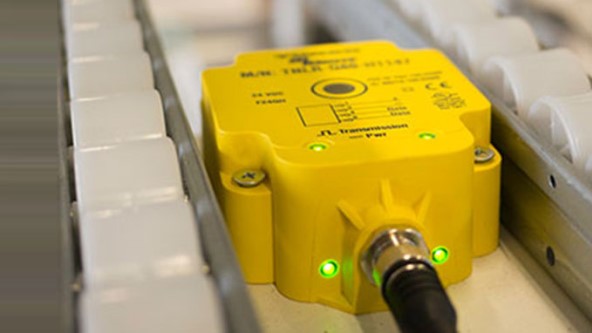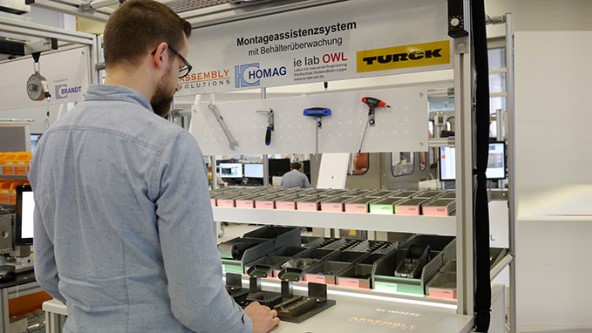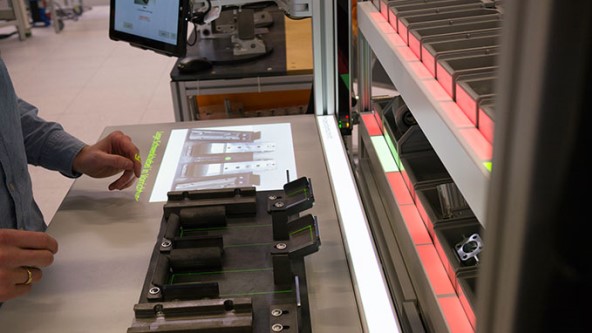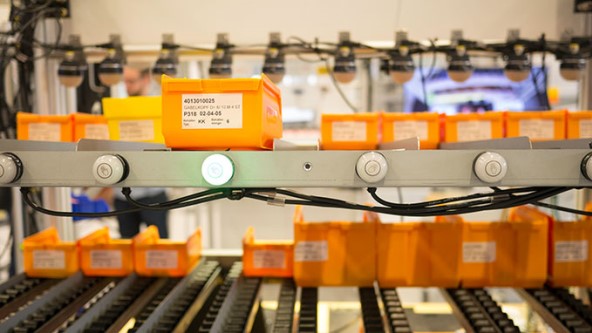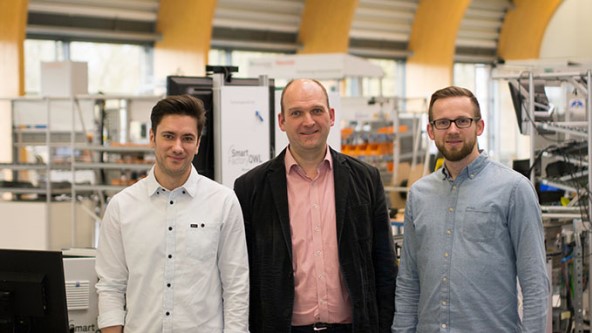Put-to-Light in SmartFactoryOWL
Turck shows system solutions for light-controlled worker guidance in manual assembly processes in the SmartFactoryOWL manufacturer-independent demonstration platform
The SmartFactoryOWL is a demonstration platform that provides support in intelligent automation for small to medium-sized companies on the way to digitized production. As a partner of the SmartFactoryOWL, Turck has been represented since 2016 with a pick-to-light system, to which researchers and students of the OWL University of Applied Science have now added a put-to-light system and a key indicator cockpit. The put-to-light system optimizes the supply of materials, while the key indicator cockpit provides guidance for the worker during the assembly process. The cooperation between Turck, the SmartFactoryOWL and Assembly Solutions enabled the development of a projection-based assistance system using Easy Array light curtains.
Manufacturer-independent solutions for hands-on testing
The SmartFactoryOWL model factory was founded in Lemgo in April 2016 by the University of Applied Sciences East Westphalia-Lippe and the Fraunhofer Institute. “One goal of the SmartFactoryOWL is to develop different assembly concepts and use them alone or combined” says professor Sven Hinrichsen, who represents the industrial engineering area in the SmartFactoryOWL.
Pick-to-light for every requirement
Hinrichsen and his team have been working with the pick-to-light system developed by Turck and its optical sensor partner, Banner Engineering, for two years. Initially, the goal was to optimize a manual assembly process with a wide range of variants for a machine builder. The first version of the light-controlled worker guidance system was completed in the same year that the factory was founded, and has been continuously further developed up to today.
Extension with put-to-light and RFID
Sven Hinrichsen and some of his students developed in the SmartFactoryOWL model system a put-to-light solution for optimizing material logistics. The system notifies the warehouse automatically of any empty container. “Unlike labeled containers, this RFID system enables the actual content of the containers to be written to the tag. Thanks to the fast information transfer, we are able to reduce the number of required containers and therefore also reduce stock levels in the plant,” explains Sven Hinrichsen.
Overview thanks to key indicator cockpit
The actual progress of the assembly process is shown to the worker in real time by the key indicator cockpit next to the workstation. It can also show the produced batch size, the order list and other key indicators. The cockpit acquires its data directly from the TX513 of the pick-to-light system via OPC-UA. “Each individual step is logged so that we have continuous status information,” Hinrichsen explains the decision.
Projection-based assistance systems from Assembly Solutions
Assembly Solutions developed a system that projects the current work instructions and the components directly onto the workbench by means of a projector. The projection shows the necessary information for correct assembly using images, symbols and plain text. Light beams, arrows or other markings indicate which component currently has to be fitted and how. This guides the operator continuously through the process, thus reducing the error rate and boosting productivity.
Two pairs of Banner Engineering’s Easy Arrays measuring light curtains, which are mounted horizontally and vertically in front of the picking shelf with the component containers, check whether the correct component has been picked. The light curtains form a 2D coordinate system, in which the container positions and sizes can be defined and adjusted easily. They are therefore independent of the material trolley storing the containers. Easy Arrays communicate via Modbus RTU with Turck's TBEN-S-2COM module, which in turn communicates with the PC-based controller of the application via Modbus TCP.
- Topics & Technologies


